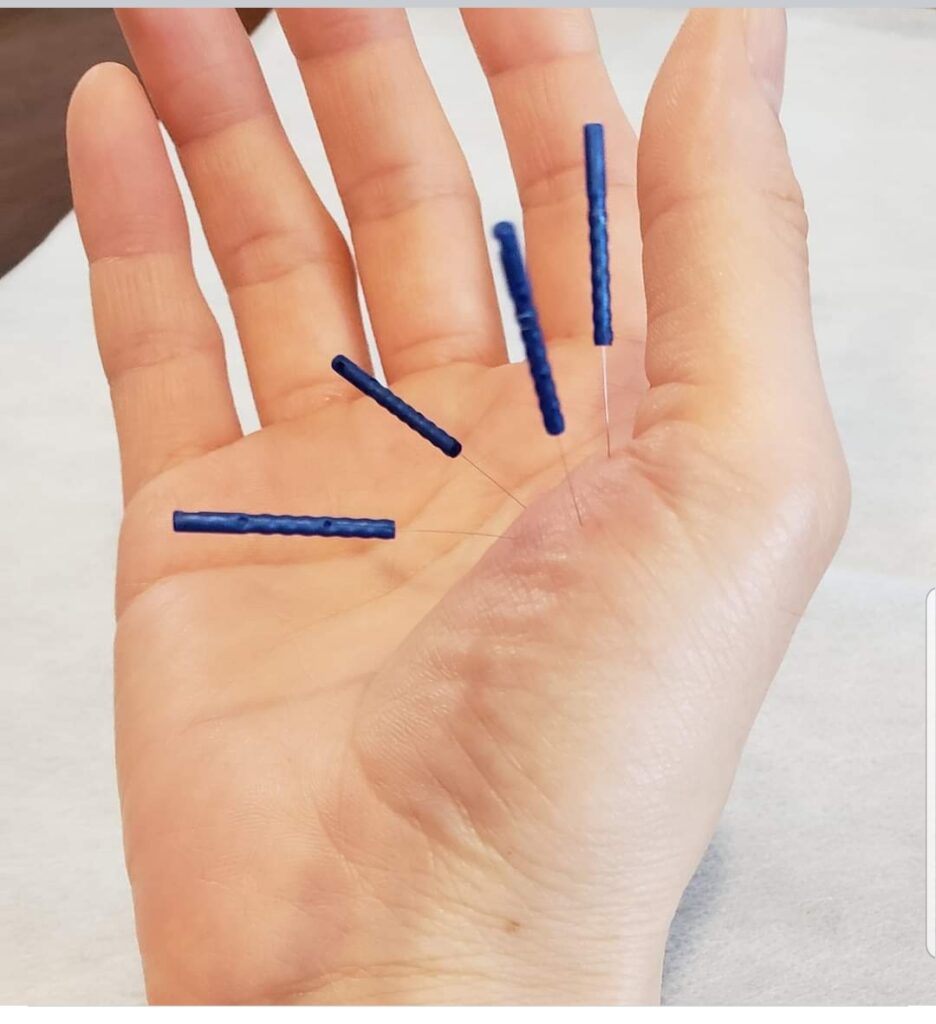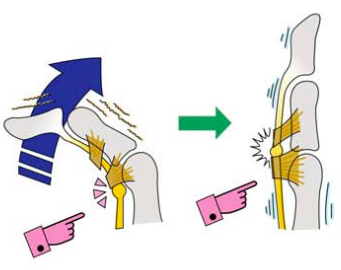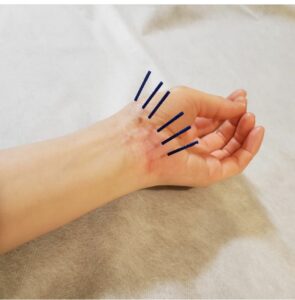ばね指 (母指)
Spring finger
ばね指 母指に対して施術いたしました。
指の曲げ伸ばしの際の動きが悪かったり痛んだりすることが多い疾患です。手のひら側の指のつけ根の腱の通り道に、腱鞘と呼ばれるものがあります。これは、腱が浮き上がらないようにするためのベルトのような役割をしており、指をスムーズに動かせる構造になっています。この腱鞘と腱の間で炎症が起こると、指の動きのスムーズさが失われます。いわゆる指の腱鞘炎のような状態です。ばね指と呼ばれるのは、スムーズさが失われた部分を通過した時に急に指が伸びる、ばね現象が起こることがあるためです。ばね指の症状としては、折り曲げた指を、もう片方の手で伸ばさないと伸ばしにくくなる、指に腫脹や熱感、押さえた時や動かしたときに痛みが出現するなどがあります。最初のうちは手のひら側に痛みが出るだけです。症状が進んでいくと、ばね現象が出現するようになり、さらに進むと自力では指の曲げ伸ばしがまったくできなくなり、日常生活にも影響が出てくるようになります。更年期や妊娠・出産後の女性に多くみられます。この時期の女性は加齢によって筋力低下や骨粗鬆症、閉経などによってホルモンバランスが変化します。ホルモンバランスが関与する腱や腱鞘が弱くなることで傷みやすくなり、ばね指となりやすいのです。症状は親指や中指に多くみられますが、他の指にもみられることがあります。また、まれではありますが乳幼児の母指にも発生することがあります。
This disease often causes poor or painful movement when bending and stretching the fingers. The path of the tendon at the base of the finger on the palm side of the hand is called the tendon sheath. This acts like a belt to keep the tendon from lifting up, allowing smooth movement of the fingers. When inflammation occurs between this sheath and the tendon, the smoothness of finger movement is lost. This is what is called tendonitis of the fingers. The reason why it is called spring toe is that the finger may suddenly stretch when it passes through the area where the smoothness is lost, or the spring phenomenon occurs. Symptoms of springing fingers include difficulty in extending a bent finger unless it is stretched with the other hand, swelling and heat in the finger, and the appearance of pain when pressing or moving the finger. In the beginning, the pain only appears on the palm side of the hand. As the condition progresses, a spring phenomenon appears, and in more advanced stages, the patient may not be able to bend or stretch the fingers on their own at all, affecting their daily life. It is most common in women during menopause and after pregnancy and childbirth. Hormonal balance changes in women during this period due to aging, muscle weakness, osteoporosis, and menopause. The tendons and sheaths involved in the hormonal balance become weak and easily damaged, making spring toe more likely to occur. Symptoms are most common in the thumb and middle finger, but may occur in other fingers as well. It can also occur, although rarely, in the mother fingers of infants.


日本手外科学会 手外科シリーズ


